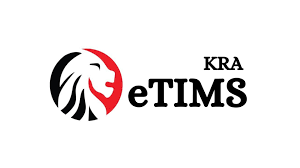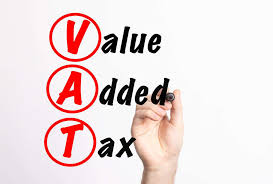What is insolvency?
Insolvency is an undesirable financial predicament that arises when the financial obligations of an entity cannot be serviced with the available resources. Insolvency signifies a turbulent state where debts exceed assets, and the flow of funds falls short of meeting impending liabilities. The causes of insolvency are diverse, ranging from poor financial management, changing economic factors, overwhelming debt burdens or unforeseen financial hardships. The reasons are unlimited.
When confronted with insolvency, entities will find themselves compelled to explore avenues such as restructuring, engaging in negotiations with creditors, or contemplating the solemn act of filing for liquidation. It is a complex landscape.
Exploring Kenya’s insolvency Law:
With the introduction of the Insolvency Act in 2015, Kenya experienced a transformative shift from the previous practice of winding up insolvent companies solely for the benefit of creditors. The current approach now emphasizes the administration of such companies, aiming to revive their profitability and ultimately return control to the directors. Liquidation is now seen as a last resort, only to be pursued when all efforts to salvage the company prove futile.
Insolvency Practitioners:
Under the Act, individuals assuming the roles of liquidators, administrators, collectively referred to as Insolvency Practitioners, must possess specific qualifications. Only qualified insolvency practitioners can be appointed in any of these capacities. To meet the requirements, an insolvency practitioner must:
- Meet educational, practical training, and experience.
- Be a member of a professional body such as the law society of Kenya ISK or the Institute of certified public accountants
- Be a natural person.
The Debt Threshold:
The Act defines a company as unable to pay its debts if it fails to settle a debt of at least 100,000 Kenyan Shillings within 21 days of receiving a written demand. This threshold determines the insolvency status of a company.
The Three Insolvency Regimes:
The Act introduces three distinct legal frameworks for handling insolvency cases:
- Administration of Insolvent Companies:
Previously, an insolvent company faced immediate winding-up. However, the Act introduces measures aimed at reviving the company’s trading potential through the appointment of administrators. These administrators focus on restoring the company’s profitability rather than swiftly liquidating its assets.
An administrator can be appointed by any of the following entities:
- The Court.
- The holder of a floating charge (debenture holders) encompassing the majority or substantial part of the company’s assets.
- The company itself or its directors.
Once appointed through an administrative order, the administrator assumes control over the company’s entitled property, rendering any application for liquidation invalid. Taking any action to enforce security over the company’s property requires the administrator’s consent or Court approval. During the administration period, a comprehensive freeze is imposed on distress levies, legal proceedings, and even winding up petitions, unless authorized by the Court.
The administrator must ensure that all company and administrator-issued business documents explicitly state the administrator’s name and highlight their management of the company’s affairs (including opening of new bank accounts controlled by the administrator).
- Company Voluntary Arrangements (CVA):
A company facing an inability to meet its debt obligations may seek an alternative resolution by reaching an agreement with its creditors. This agreement, known as a “voluntary arrangement,” allows the company to satisfy its creditors’ claims through means other than full payment. The directors can propose a composition to settle the debts or a scheme to restructure the company’s financial affairs. (this kind of arrangement is commonly referred to as “Chapter 11 bankruptcy” in the USA where the bulk of the Kenyan Insolvency Act is borrowed from)
To supervise the implementation of the voluntary arrangement, the directors appoint an authorized insolvency practitioner. This practitioner files a report to the Court, assessing the proposal’s viability and the necessity of convening a creditors’ meeting. The report includes the proposed meeting’s date, time, and venue.
The insolvency practitioner, with the Court’s approval, convenes the creditors’ meeting to deliberate on the proposal’s approval, either with or without modifications. The meeting is conducted through a voting process, with a designated chairperson dividing the creditors into three groups: secured creditors, preferential creditors, and unsecured creditors.
Any modifications to the proposal require the company’s consent and may entail the replacement of the supervising insolvency practitioner. Once approved, the proposal is reported to the Court and becomes a legally binding voluntary arrangement. The appointed insolvency practitioner oversees the arrangement’s implementation, ensuring compliance with its terms in the best interests of the company and its creditors.
- Liquidation of the Company:
Liquidation represents the ultimate insolvency process leading to the dissolution and termination of the company. Previously known as winding-up, this process can be initiated through two avenues:
- a) Voluntary Liquidation:
Company members may opt for voluntary liquidation through a special resolution passed at a general meeting. Before the resolution is passed, notice of the intended resolution must be provided to any holder of a floating charge that covers a significant portion of the company’s property. After seven days from the notice or upon receiving written consent from the floating charge holder, the resolution can be passed.
The special resolution must be registered with the Registrar of Companies within 14 days of its passage. Additionally, the resolution must be published in the Kenya Gazette, at least two newspapers circulating in the company’s principal area of business in Kenya. Once the resolution is passed, the company ceases its business activities, except for those essential for the liquidation process. Any transfer of company shares or alteration of members’ status after the resolution’s passage is deemed invalid.
Voluntary liquidation can occur in two ways:
- Members’ Voluntary Liquidation: Members appoint one or more liquidators through a resolution at a general meeting. This appointment terminates the directors’ authority. The liquidator must be an authorized insolvency practitioner.
- Creditors’ Voluntary Liquidation: This type involves holding a meeting with the company’s creditors within 14 days of the proposed liquidation resolution. The company must notify all creditors and publish a notice in the Kenya Gazette and at least two local newspapers. The creditors nominate an authorized insolvency practitioner as the liquidator during the meeting. If the creditors fail to nominate a liquidator, the company takes charge of the nomination process.
The directors must prepare a financial position statement for the company, which must be presented at the first creditors’ meeting.
Regardless of the voluntary liquidation method employed, the company’s assets are used to settle liabilities impartially, without preference, and the remaining funds are distributed among the members based on their respective rights and interests.
- b) Liquidation by the Court:
The High Court has jurisdiction over supervising company liquidations. Liquidation by the Court involves filing an application with the Court, which can be initiated by the following parties:
- The company or its directors.
- Creditors, including contingent or prospective creditors.
- Provisional liquidators or administrators.
- The Attorney General.
The liquidation process through Court intervention is referred to as a Liquidation Order.
Conclusion:
While insolvency presents significant challenges, it can also serve as an opportunity for introspection, restructuring, and growth. It is a chance to reassess financial practices, implement effective strategies, and emerge stronger on the other side. By addressing the root causes of insolvency, seeking expert advice, and taking proactive steps, individuals and businesses can pave the way toward a brighter financial future.
It is crucial for those facing insolvency to seek professional guidance, evaluate the available alternatives, and craft a strategic plan to regain financial stability. With careful planning, sound financial management, and a commitment to proactive decision-making, individuals and organizations can overcome the challenges of insolvency and thrive once again. If you have doubts about your company’s financial viability, talk to us today.














